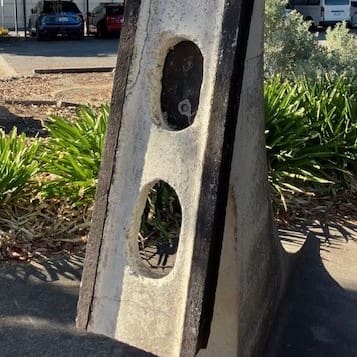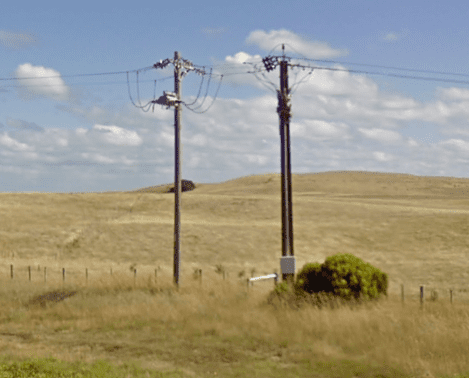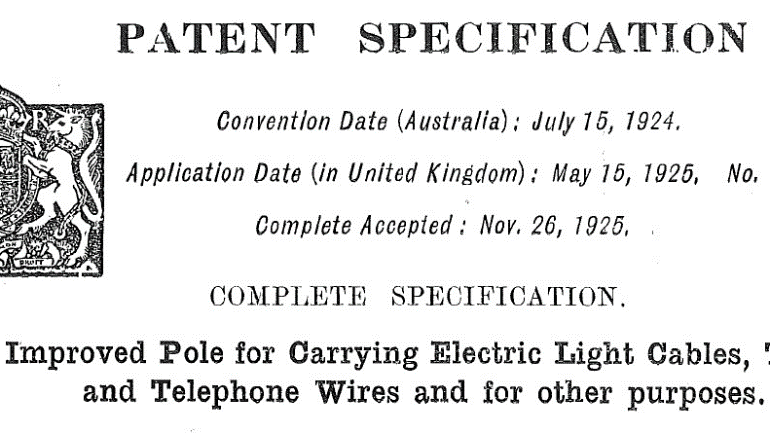
100 Years of Stobie Poles
In the heart of South Australia’s urban and rural landscapes stands an enduring symbol of innovation: the Stobie pole. With over 650,000 of these iconic structures dotting the landscape, their legacy traces back to the ingenuity born out of necessity in the 1920’s of inventor James Cyril Stobie.
As part of the centenary celebration, I had the privilege of going on a tour of the Angle Park Stobie Pole Manufacturing Facility, hosted by SA Power Networks. This visit offered a firsthand glimpse into how these icons are made.


A traditional wooden Victorian power pole alongside a South Australian Stobie pole at the border.(Google Street View)
Stobie’s classic steel and concrete construction developed during a time when Adelaide’s suburban expansion was hindered by the scarcity of suitable timber for traditional utility poles. The existing eucalyptus trees were not a viable option for mass harvesting and white ants were a major problem for any wooden utility pole. Stobie’s design substituted the traditional wooden poles with a hybrid creation crafted from concrete and steel – comprising a central steel beam encased in concrete, providing the necessary strength to support electrical wires and withstand adverse weather conditions. The innovation not only resolved the scarcity issue but also offered durability far exceeding that of timber poles: just over 50% of South Australia’s Stobie poles are at least 50 years old.
In 1924, Stobie’s design received its patent, marking a significant milestone in South Australia’s industrial history. Over the decades, the Stobie pole proliferated across the state, becoming an iconic feature of the landscape. Its adaptability further extended to telecommunications and street lighting, cementing its status as a versatile utility solution.

The original 1924 patent specification for the Stobie Pole (and 1926 US Patent). The patent was submitted by James Stobie and Frederick Wheadon.(Wikimedia Commons)
Beyond its utilitarian purpose, the Stobie pole holds cultural significance beyond representing engineering ingenuity and resourcefulness of South Australians – along with Coopers Beer and Frog Cakes. Since the 1980’s numerous individuals and community groups have utilised the blank canvas offered by a Stobie pole to showcase many colourful examples of artwork adding a distinctive South Australian character to our streetscape (note: needs council and SA Power Networks approval first).
Today, while newer materials and designs have emerged, the Stobie pole remains integral to South Australia’s infrastructure network, a testament to the enduring legacy of James Cyril Stobie’s ingenious creation. The tour of the Angle Park facility allowed me to see this South Aussie icon up close – thanks to the team at SA Power Networks and Angle Park for the opportunity.

Angle Park staff manufacturing the iconic Stobie Pole (SA Power Networks)

